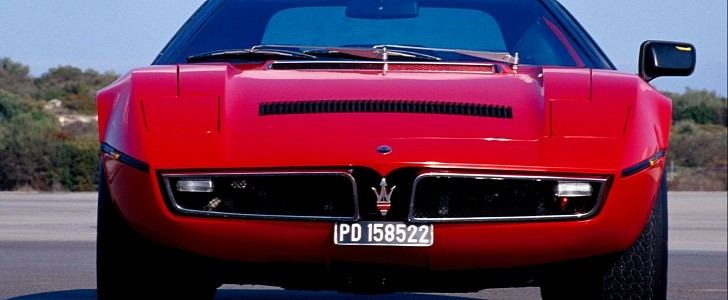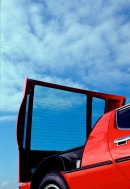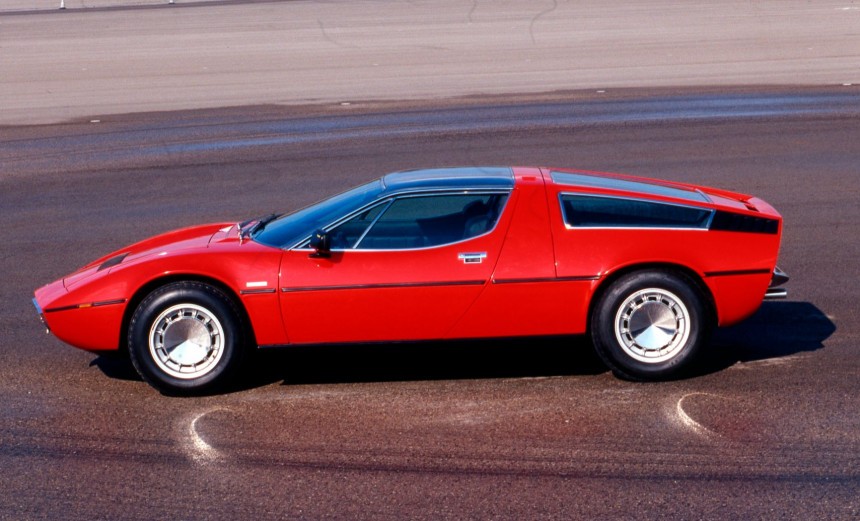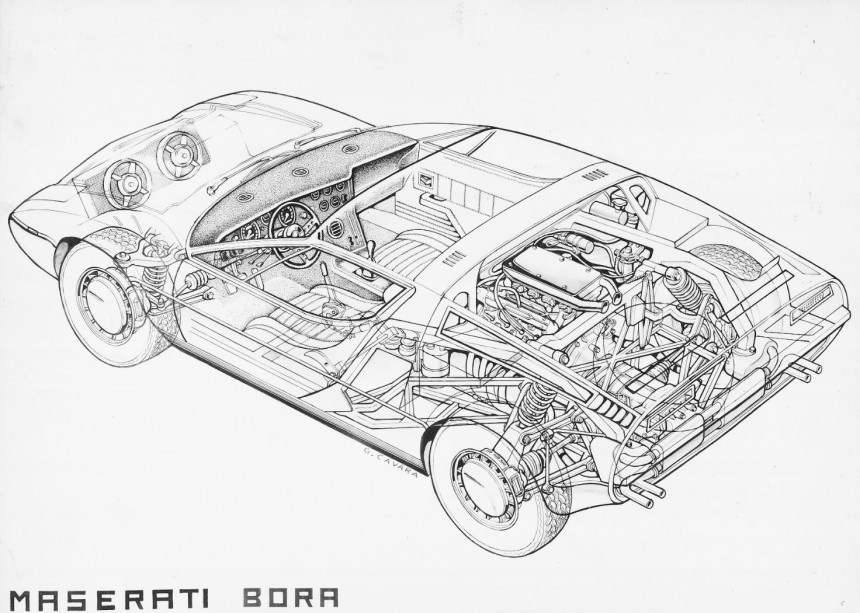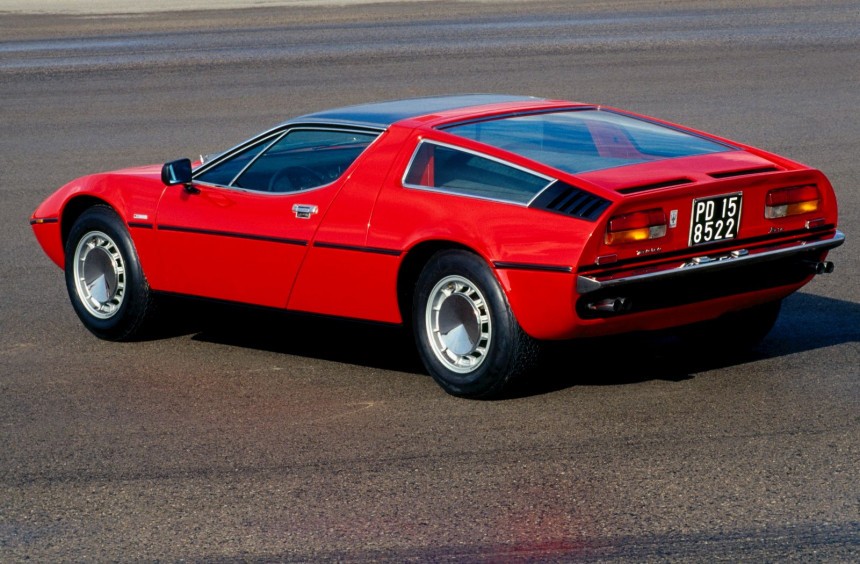A little over half a century ago, the 1971 edition of the Geneva Motor show was opening its doors to a brave new world, and the timing could not have been more perfect since the threat of the upcoming Oil Crisis was looming on the horizon.
Firstly, the show was a treat of eye-candy for all the visitors, as it was the backdrop for some of the best-looking Italian sports cars the world had ever seen until then, or since.
As anyone about the two most iconic models revealed at that year’s edition of the Geneva Motor Show and most will respond in a chorus: ‘The Lamborghinis!’
Even though this article is not about the Raging Bull from Sant’Agata Bolognese, those people would be correct. The flaming yellow Lamborghini LP 500 concept car did have its first public outing there, and boy what an appearance it was!
Not only that, but Lamborghini went for the double-dip in the stardom pan and also unveiled the most hardcore version of the beloved Miura range there, the mighty and now super-rare SV.
These two Lambos are probably why not so many people remember the 1971 edition of the famous Swiss car show as also being the venue where Maserati unveiled its most high-tech production car to date, the first generation of the Bora.
Like other Maseratis of the era, such as the Mistral, the Bora was named after a wind. Volkswagen later used the name on a compact sedan based on the Golf in Europe and other countries, but the origin of the name is also from a wind found in areas near the Adriatic Sea and Maserati (or others) couldn’t copyright it.
Its name or gorgeous body, yet another masterpiece by Giorgetto Giugiaro at his prime, aren’t actually what made the Bora truly spectacular, though, but the never before-seen technology it featured for an Italian sports car in general and for a production Maserati in particular.
Its development had started not long after the Trident-badged carmaker had been bought by none other than Citroen, an event that happened in 1968. Until then, Maserati had been known as a manufacturer of fast, beautiful but technologically outdated sports cars.
With Citroen being known for its avant-garde designs at the time, they couldn’t let Maserati play in the same league as before, so the concept of a mid-engine two-seat sports car was proposed, especially since Ferrari was also working on a similar layout at the time, while Lamborghini had changed the sports car world with the Miura.
So, yes, the Bora was the first Maserati production car with a mid-engine layout, but the tech frenzy didn’t stop there. It was also the first Trident model with four-wheel independent suspension, if you can believe it, a tech that had been used on Lamborghinis since 1964.
Famous for its developments in hydraulic suspension, Citroen lent a hand and its engineers used the double-chevron's high-pressure hydraulics system not for the Bora’s suspension, but for the ventilated disc brakes and,… wait for it, for controlling the movement of the entire pedal box, the driver’s seat and the retractable headlights.
Yes, after making sports cars with rigid rear-suspension and drum brakes, Maserati was now playing above the big leagues and had creature comforts not seen on any of its competitors for decades to come.
The civilized and practical Bora was like how the 911 is seen now compared to its rivals: an everyday supercar. Its hydraulically powered pedal cluster could be moved forward or backward at the touch of a button, the steering wheel could be tilted or moved forward or backward and the positioning of the driver’s seat was electro-hydraulically controlled as well.
The development prototypes and the red concept car first shown at the 1971 Geneva Motor Show used an innovative MacPherson strut based front suspension, but it was abandoned for the production models because it just didn’t make a good team with the wide front tires and a rack-and-pinion steering. On the production cars Maserati reverted to a more traditional wishbone front-suspension arrangement.
Still, remember, this was the first Maserati with an independent front and rear suspension, so it still counts for something.
Both the show car and the first Boras made were powered by the familiar 4.7-liter V8, with a lineage that can be traced back to Giorgio Alfieri’s 450S racecar, Maserati’s first actual mid-engined vehicle.
With an aluminum block and hemispherical combustion chambers, the V8 was mounted longitudinally in the chassis, which was a combined steel monocoque chassis and body, with the powertrain being shoved inside a tubular steel subframe at the rear, together with a five-speed ZF manual transmission.
Four Webber carburetors were in charge of feeding the 310 horsepower of the V8 with plenty of air and gasoline.
Sadly, those carburetors were also the reason behind the lack of success of the car down the road, as the 1970s Oil Crisis was just beginning, and people had already started to look at economy cars instead of gas-guzzling Italian supercars.
Any plans of going racing with the platform were dropped for the same reason.
The Bora paved the way for the 2+2 Merak, which was also mid-engined, and despite not rescuing Maserati from near bankruptcy a few years later, it did show the world that the Trident carmaker was still a force to be reckoned with. It certainly deserves its golden anniversary.
As anyone about the two most iconic models revealed at that year’s edition of the Geneva Motor Show and most will respond in a chorus: ‘The Lamborghinis!’
Even though this article is not about the Raging Bull from Sant’Agata Bolognese, those people would be correct. The flaming yellow Lamborghini LP 500 concept car did have its first public outing there, and boy what an appearance it was!
Not only that, but Lamborghini went for the double-dip in the stardom pan and also unveiled the most hardcore version of the beloved Miura range there, the mighty and now super-rare SV.
These two Lambos are probably why not so many people remember the 1971 edition of the famous Swiss car show as also being the venue where Maserati unveiled its most high-tech production car to date, the first generation of the Bora.
Like other Maseratis of the era, such as the Mistral, the Bora was named after a wind. Volkswagen later used the name on a compact sedan based on the Golf in Europe and other countries, but the origin of the name is also from a wind found in areas near the Adriatic Sea and Maserati (or others) couldn’t copyright it.
Its development had started not long after the Trident-badged carmaker had been bought by none other than Citroen, an event that happened in 1968. Until then, Maserati had been known as a manufacturer of fast, beautiful but technologically outdated sports cars.
With Citroen being known for its avant-garde designs at the time, they couldn’t let Maserati play in the same league as before, so the concept of a mid-engine two-seat sports car was proposed, especially since Ferrari was also working on a similar layout at the time, while Lamborghini had changed the sports car world with the Miura.
So, yes, the Bora was the first Maserati production car with a mid-engine layout, but the tech frenzy didn’t stop there. It was also the first Trident model with four-wheel independent suspension, if you can believe it, a tech that had been used on Lamborghinis since 1964.
Yes, after making sports cars with rigid rear-suspension and drum brakes, Maserati was now playing above the big leagues and had creature comforts not seen on any of its competitors for decades to come.
The civilized and practical Bora was like how the 911 is seen now compared to its rivals: an everyday supercar. Its hydraulically powered pedal cluster could be moved forward or backward at the touch of a button, the steering wheel could be tilted or moved forward or backward and the positioning of the driver’s seat was electro-hydraulically controlled as well.
The development prototypes and the red concept car first shown at the 1971 Geneva Motor Show used an innovative MacPherson strut based front suspension, but it was abandoned for the production models because it just didn’t make a good team with the wide front tires and a rack-and-pinion steering. On the production cars Maserati reverted to a more traditional wishbone front-suspension arrangement.
Still, remember, this was the first Maserati with an independent front and rear suspension, so it still counts for something.
Both the show car and the first Boras made were powered by the familiar 4.7-liter V8, with a lineage that can be traced back to Giorgio Alfieri’s 450S racecar, Maserati’s first actual mid-engined vehicle.
Four Webber carburetors were in charge of feeding the 310 horsepower of the V8 with plenty of air and gasoline.
Sadly, those carburetors were also the reason behind the lack of success of the car down the road, as the 1970s Oil Crisis was just beginning, and people had already started to look at economy cars instead of gas-guzzling Italian supercars.
Any plans of going racing with the platform were dropped for the same reason.
The Bora paved the way for the 2+2 Merak, which was also mid-engined, and despite not rescuing Maserati from near bankruptcy a few years later, it did show the world that the Trident carmaker was still a force to be reckoned with. It certainly deserves its golden anniversary.
